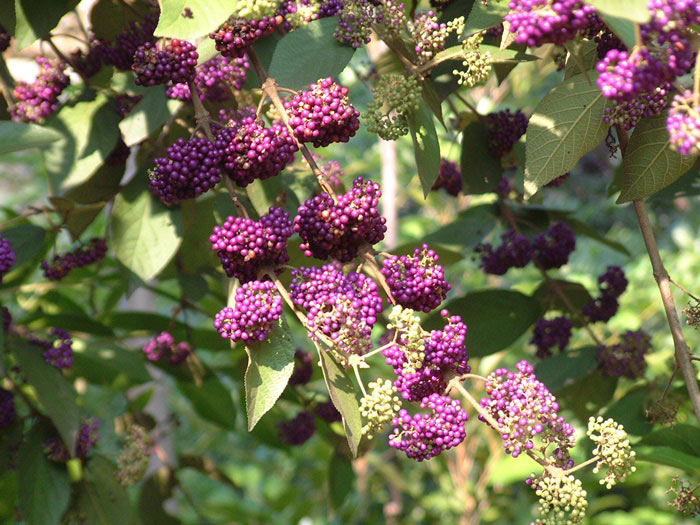Callicarpa formosana
In the sunny and open areas in the low-altitude forests in Taiwan, you can always find a shrub that strikingly charms with its delicate pink flowers and bright purple-red fruits in different seasons. This is the Formosan beauty-berry, which is native to Taiwan. This plant is not only a beautiful sight in the mountains and forests but also an important material in floral art.
When spring and summer arrive, the Formosan beauty-berry blossoms into clusters of delicate pink flowers. Although the blooming period is brief, the fruits display a completely different kind of beauty when they ripen. Initially, the small fruits are green, but over time, they gradually transform into vibrant purple-red. The fruits hang from the branches like strings of purple-red pearls, standing out vividly against the green leaves. Its fruits have high ornamental value and are also an important food source for many birds. In winter, it is common to see flocks of birds flitting among the branches, pecking at the fruits.
This plant is covered with star-shaped hairs throughout its entire body, which can be observed with a magnifying glass.
The Formosan beauty-berry is distributed in southeastern and southern China, Ryukyu, and the Philippines, and is widely distributed throughout Taiwan, typically found in mountainous areas below 1,500 meters. It prefers sunny environments and is commonly found along forest edges, open areas, slopes, or secondary forests. In the Botanical Garden, it is cultivated in the Coral Atoll Area, Northern Lowland Area, Southern Lowland Area, and Monsoon Rainforest Area. The plants in the Monsoon Rainforest Area near the plaza in front of the Tropical Rainforest Greenhouse are the easiest to observe. Additionally, it is cultivated in the herb garden of the Human Cultures Hall as a plant source for traditional Chinese medicine.
